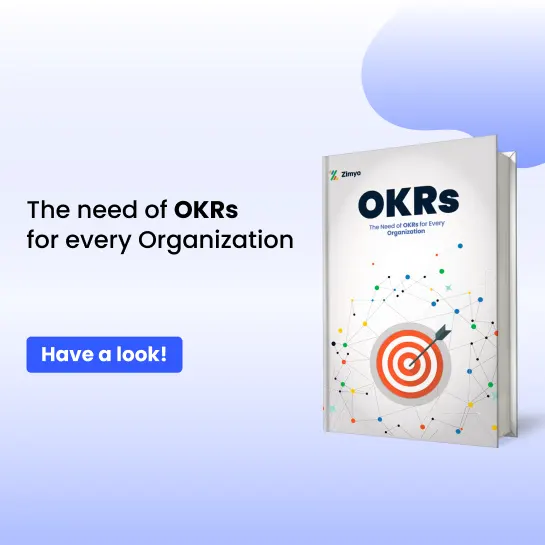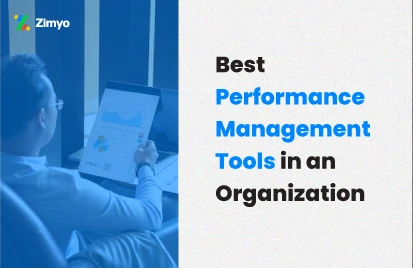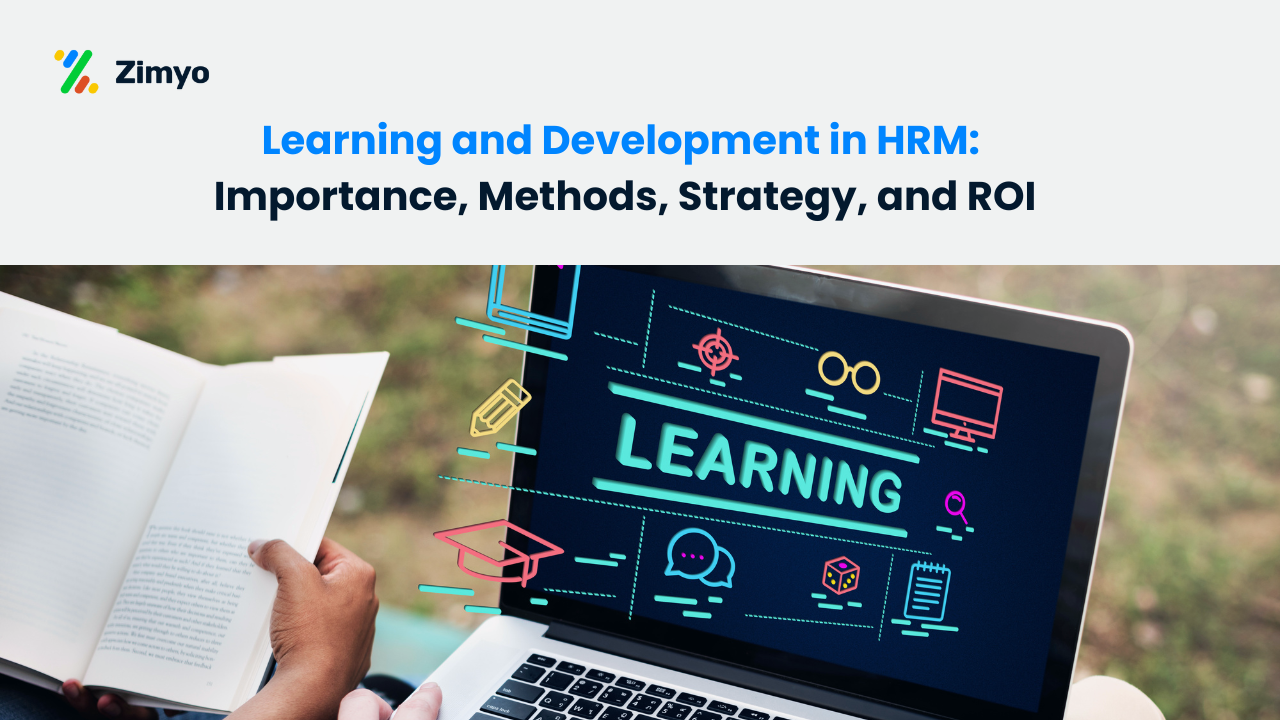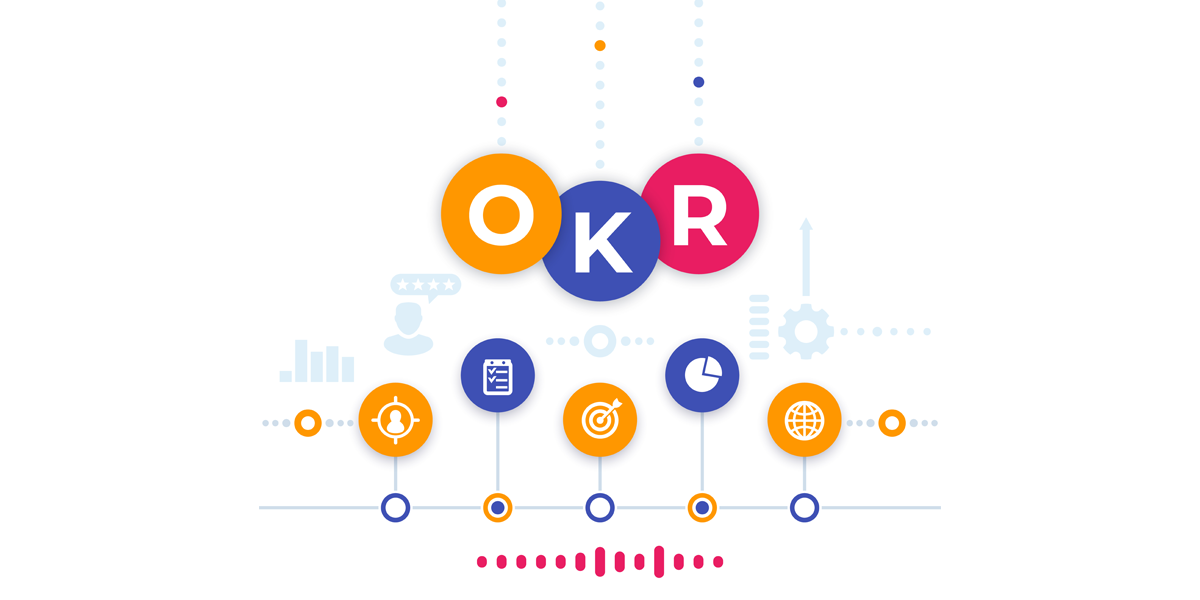Very few businesses actually go on to make a profit and function as expected. Most companies deviate from their organizational goals and missions because they fail to comprehend what and how the goals are to be achieved. Only a very small number of companies actually meet all of their objectives. This might be attributed to poor goal-setting or poor execution; either or both could be the case.
It’s difficult to expand your business if you don’t know where you’re going or how your company is going to get there. This is where the OKR Framework comes in. OKR is a goal-setting framework used to aim and achieve set objectives.
However, in a typical OKR framework, executives determine the general goals. These might be yearly, half-yearly or quarterly, depending on your organization. What is essential is that the objectives should be properly conveyed to managers, who are then accountable for defining their own goals and coordinating their other team members. Only then may employees create their own personal goals for which they will be held accountable while goals are being missed.
OKR software might be an overwhelming technique for many companies, so we decided to simplify all you need to know about the OKR framework in this article. The article will give a detailed synopsis of OKR methods and framework and how you can set team goals effectively.
You will get to understand the stages involved in OKR methodology and how a business can successfully establish OKRs to attain its targets smoothly.
What is an OKR framework?
OKR framework is a goal-setting framework that helps businesses define goals and objectives and track progress. The framework is intended to help companies establish long-term goals in days rather than months.
OKRs serve a crucial role in ensuring that all workers are aware of the company goals and are working together to accomplish them. When OKRs are used in the workplace, employees are encouraged to establish competitive goals and must show progress toward the successful achievement of key results with supporting evidence.
OKR framework generally consists of three main parts or elements. Each part has a specific task to be taken care of.
- Objectives
This specifies the goal’s qualitative objective and what we want to achieve. Your goal should be brief and simple enough for everyone in your business to comprehend.
- Key results
These are the results defined by the OKR framework that has to be achieved by the organization with the metrics, data, and time given.
- Time period
A time frame for measuring the effectiveness of work done to achieve your goal. Many teams set OKRs for a three-month term or yearly term to correspond with their business goals.
What is OKR Methodology? What are the Stages for Implementation?
The OKR approach is used at the organizational level to align teams. The objective of the OKR methodology is to have a centralized strategy in which everyone works towards the same goal.
Let us look at how the OKR technique works in stages and how it should be structured.
- Stage 1- This is the initial stage in the OKR approach. The aim is to see where you envision yourself as a company goal-getter in a specific time period. The goal should be consistent with the vision and purpose of your business.
- Stage 2- Your business has established a long-term objective for the coming year. The next stage is to establish a series of smaller goals that will function as increasing milestones toward a bigger organizational goal. You can establish quarterly goals, yearly goals, and so forth. You and your team can develop several objectives and prioritize the most critical ones. Instead of being metric-driven, these objectives should encourage teams to achieve the goal.
- Stage 3- The final stage is to determine key actions for each key result item in the business mission. These are the actions that will get you closer to your key results and, eventually, to your overall objective for the organization.
How to establish OKR Framework?
You must encourage your team to set challenging and ambitious goals. However, it is critical to underline that the results of OKRs will not negatively influence performance evaluations, salary, or job security.
You should arrange a brainstorming session with your staff to determine which goals will have the biggest effect in the coming quarter. Ensure processes are smooth and not stressful on the teams.
After you’ve figured out establishing your goals, you must determine the essential outcomes. Instead of making your key results into a to-do list, focus on results that are aligned with company goals. Your OKR framework must describe how certain tasks will deliver the intended goals in what specific time period.
OKRs are designed to be adaptable, which means they may change in response to your priorities. Once you’ve established your OKRs, if you feel completely convinced you can hit a key result, go for increasing your business target by up to 25% or so. OKRs help you create your business objectives over the year, and then you can use these high-level goals to carry out particular tasks and projects across each team. This helps us to approach each project with a clear understanding of how it impacts the company’s overall goals.
Best Okr Frameworks And Methodology That Helps Set Team Goals
- Align OKR with business mission or goal
Every OKR you set must align with the company’s overall goals. Whether your company’s management aims to grow net profits by a certain amount or minimize customer attrition by a certain percentage, every task must contribute to that goal.
Look for weaknesses in your systems and implement OKRs to reduce erratic processes. However, keep in mind that the important outcomes must be specific and measurable.
- Obtain inputs and information from the team
Getting to know inputs from your team show how quick and well the team is while performing their task for goal achievement. When establishing the objectives and key results, getting feedback from the whole team rather than having goals emerge from the top-and-down approach is critical.
Pay close attention to what the team says, and don’t forget to incorporate their suggestions directly into each OKR objective. This brings the team closer to the manager and feels they are important to the project. Furthermore, they go on to do their best at work.
- Make the data measurable.
It doesn’t matter if the goal metric is small or large; measuring quarterly or yearly is a must. Say reaching 100 thousand customer bases in 3 months or writing 10 blogs per month etc. can also be quantified and measured as per requirement.
Measurable metrics should always be available to comprehend a bigger picture of what is going on in the organization. OKR software beautifully makes sure of this by setting up key results in the picture.
- Divide key results into a smaller and clear one
Make smaller goals out of your major key results. Knowing what you need to accomplish to attain your main goals clarifies your results. These smaller goals serve as checkpoints along the way to attain the larger ones. When your objectives are too big, it might be difficult to keep focused on reaching them, these divisions along the way can help you stay on track.
- Create a progress report
It is recommended to designate, say, a document or file to log your team’s progress toward your objective at the conclusion of each week or month. This maintains your OKRs at the forefront of your team’s minds and holds everyone accountable for helping the business reach its larger objectives.
The managers can make a log table of weekly work done, or a monthly task report on an excel sheet or track daily goals, etc. this way, objectives and key results are easier to complete and comprehend.
- Be specific about the objectives and key results.
Concentrate on goals you know you can do in the allotted time, and carry out the task in a simple and smooth way to attain it. Prioritize your goals based on what the company needs the most.
When defining goals, consider many approaches to achieving the desired outcome. You can create an action plan to be more detailed about how to reach your goal. Expectations will be clearer if you are more precise. Clear objectives imply you will know exactly what you need to do to achieve your goals.
- Motivate and reward teams
It is important that the organization motivates and rewards teams and individuals for their contribution and looks forward to the objectives of the company. This helps keep employees engaged and closer to the objectives till it is achieved.
Moreover, whenever a milestone is attained, reward and honor yourself and others. A positive environment helps in the maintenance of optimal practices. Don’t wait until you finish a goal to appreciate the effort; celebrate small progress as well. Encourage all coworkers to openly disclose their OKRs and build a support structure within your team.
- Do not hurry to reach or stretch your goals.
As the saying goes, hurry-burry destroys the curry. Similarly, the organization should have patience and not hurry in taking up decisions for changes in a quick and inefficient manner. In order to see results, OKR’s best practices should be followed.
Additionally, goals should be both reachable and visionary. Managers are sometimes concerned that setting simple goals may demotivate employees. Everything depends on how realistic they are. Employees will be unhappy if they are assigned unachievable objectives. Ambitious goals are excellent but should not be used to set employees up for failure.
- OKR benefits culturally
The most significant consequence of using OKR in most businesses that do not already have goal management systems in place is a culture change from production to outcomes. Within an organization, OKR focuses on responsibility, openness, and alignment. As a result of all of this, performance and employee engagement improve.
According to a current study, when comparing groups of employees who used OKR to those who did not, those who used it were far more successful in achieving their objectives, resulting in greater performance. In reality, the group that did not employ OKR actively requested to be more engaged in future cycles.
Conclusion
Setting up an OKR framework and methodology is not a very difficult task. The managers of the organization should have clear and precise knowledge of what they are doing and how they will be doing it. The objectives and key results are important in this case, and if the OKR is clear enough, then employees are sure to make it happily and successfully.
As discussed in the points, teamwork is important, and to ensure the objectives are achieved smoothly, organizations should have an adaptive environment and supportive work culture across the departments until the results are attained. Rewards and recognition are essential parts of any organization. This motivates and creates emotional intelligence in any employee.
As you can see, the OKR software can accommodate a wide range of goals and projects, eventually making your employees more effective and accountable for their contributions to overall goals. Setting OKRs effectively will propel your team to success and enable you to exceed your organization’s objectives.





